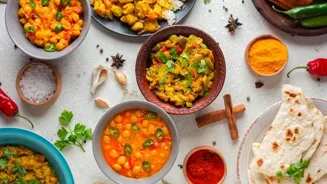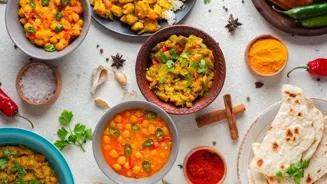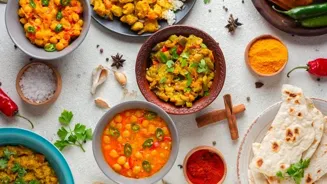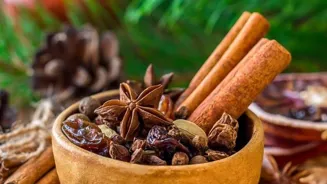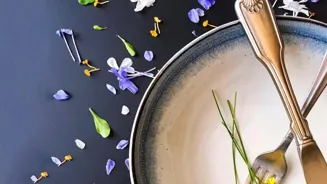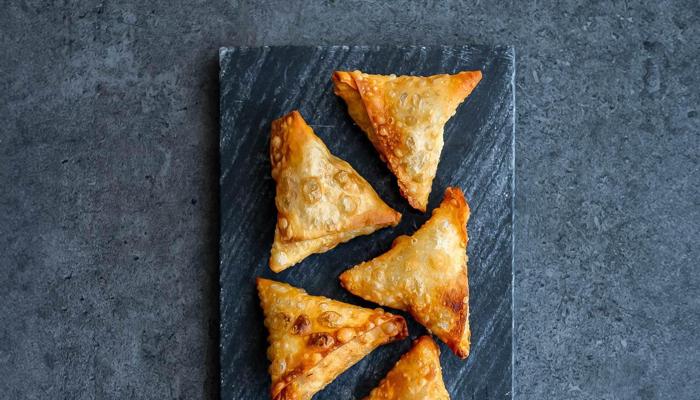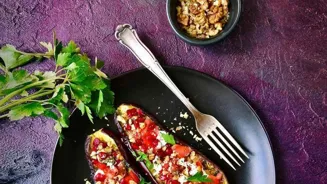Unleash the Secrets of Authentic Indian Curries at Home! Learn the tips & techniques to elevate your cooking game. Spice up your kitchen!
Forget ordering in! Imagine dishing out restaurant-quality Indian
curries right from your own kitchen. Sounds dreamy, right? Well, it's totally achievable.
Many home cooks are often intimidated by the complexities of Indian cuisine, but with a few essential techniques, you can unlock the flavors and aromas that define authentic Indian curries.
These aren't complicated, these are simple methods that are followed that will take you from basic cooking to restaurant level flavour. So, grab your apron, and let's dive into the secrets that will transform your cooking.
Your friends and family will think you've secretly enrolled in culinary school.
The aroma of spices is also very important!
The Art of the Tadka: Tempering is Key
The 'tadka', also known as tempering, is the heart and soul of many Indian curries. It's the process of heating oil or ghee and adding whole spices to it, allowing their flavors to bloom before incorporating them into the dish.
This simple step infuses the curry with a depth of flavor that is simply unmatched. But here's the trick: don't just throw everything in at once. Start with spices that need more heat to release their aroma, like cumin seeds and mustard seeds.
Wait until they splutter before adding ingredients like asafoetida (hing) and curry leaves. The order matters. Also make sure that the oil is not too hot or cold, it must be correct for the aromatics. This will make the difference between a great curry and an average one.
Learning this trick will improve the flavour.
To do an amazing tadka, heat your oil slowly. Use ghee for a richer flavour in dishes. Add whole spices that need intense heat first to release those flavours correctly. Wait and watch as the spices start to splutter this shows they're ready.
Now add ginger or garlic and then some curry leaves. Remember to be careful as they might also splutter. Pour it onto your main curry in its respective bowl and get the best aromatics and flavours possible.
The order that the ingredients are added to the tadka matters the most for a good and authentic flavour. Mastering tadka is like unlocking a secret menu of flavours.
Building the Base: Onions, Tomatoes, and Ginger-Garlic Paste
The foundation of most Indian curries rests on a holy trinity: onions, tomatoes, and ginger-garlic paste. However, the way you treat these ingredients is crucial. First, the onions. They need to be cooked low and slow until they are a deep golden brown color.
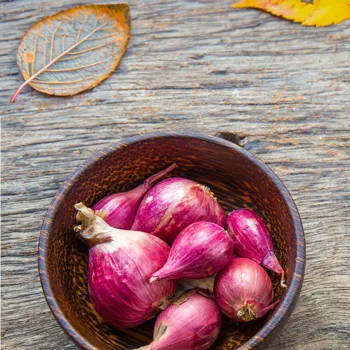
This caramelization process is what brings out their sweetness and adds depth to the curry. Don't rush it! Using a good quality pan is important for slow caramelization. Next, the tomatoes- Make sure they are cooked into the onions well so they blend well, and cook into a good gravy.
Finally, the ginger-garlic paste – always use fresh whenever possible! It's the aromatic glue that binds all the flavours together.
Firstly, the onions need to be cooked slowly until they turn a deep golden brown colour.
This process is what is called caramelizing the colour and it brings out a lovely sweetness that is really nice. Now add your tomatoes and make sure that they blend with the onions the best that they can together. Use fresh ginger-garlic paste whenever you can to ensure the best flavour.
These are the basic steps to creating the beginning of a good curry and ensure maximum flavour.
Spice it Right: Layering Flavours
Indian cuisine is all about layering flavours. Don't just dump all your spices in at once. Add them in stages to allow each spice to bloom and release its unique aroma. Start with the ground spices like turmeric, coriander, and cumin.
Roast them lightly in the pan before adding them to the onion-tomato base. This toasting process intensifies their flavour. Then, add the chili powder or cayenne pepper for heat, keeping in mind your spice preference. Remember, you can always add more, but you can't take it away!
Lastly, garam masala is usually added towards the end of the cooking process to add a final touch of warmth and complexity.
When it comes to curry spices, slow and steady wins the race. By adding spices in stages and roasting individual ingredients separately you allow maximum flavour to develop.
To do this, start with ground spices like turmeric, coriander and cumin. These are great basic fundamental spices to have. Toast these spices lightly in the pan before you add them to your onion and tomato base. Then, add the chili powder depending on your flavour and spice preference.
Remember you can always add more. Try adding the garam masala at the end for a great finish.
The Power of Patience: Simmering is a Must
Once you've built your base and added your spices, the real magic happens during the simmering process. This is when all the flavors meld together and create a symphony of taste. The longer you simmer the curry, the better it will taste.
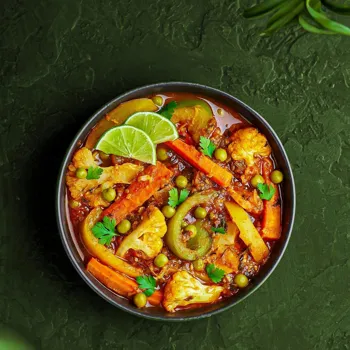
The main purpose of simmering is to remove the raw taste of the spices. Low and slow is the name of the game. Cover the pot and let the curry simmer on low heat for at least 30 minutes, or even longer if you have the time. Stir occasionally to prevent sticking.
This simmering time allows the flavors to marry and deepen, resulting in a richer, more complex curry.
Simmering can make the curry amazing, because of the flavour that can mix well together.
The main point in simmering is to remove the flavour of raw spices so that is completely mixes in the curry blend. Allow the curry to be on a low heat for at least 30 minutes, this can even be longer allowing the flavours to marry and become much more deep in flavour.
Simmering is important as it will make sure that the curry will be fully developed which is extremely important. Remember, constant stirring will prevent any possible sticking.
Finishing Touches: The Art of Garnishing
No Indian curry is complete without a final garnish. Fresh coriander leaves are a classic choice, adding a burst of freshness and color. A squeeze of lemon or lime juice can brighten up the flavors and add a touch of acidity. A dollop of cream or yogurt can add richness and balance the spices.
Sometimes, a final sprinkle of garam masala can elevate the aroma of the dish. It's all about adding those little touches that make a big difference. The garnishing will enhance the flavour of all the ingredients once finished.
Finishing touches are important to making a curry.
Fresh coriander leaves create a burst of freshness which is needed. A squeeze of lemon adds needed flavour and brightness adding the acidity to it. To add richness, cream is nice to add more flavour! Adding garam masala can enhance it and make the flavor pop.
All the garnishing makes a big difference and will make you have better flavours.
AI Generated Content. Glance/InMobi shall have no liability for the content